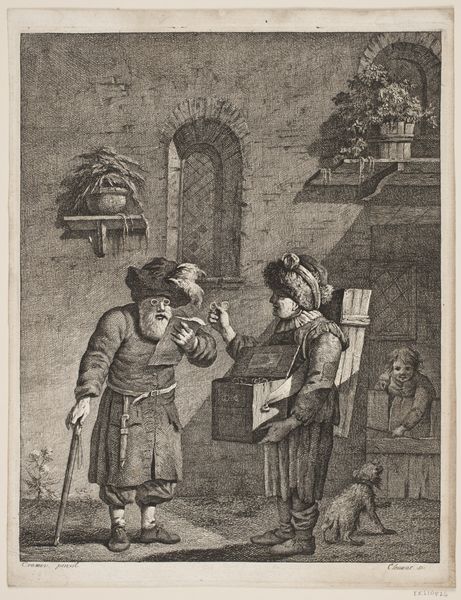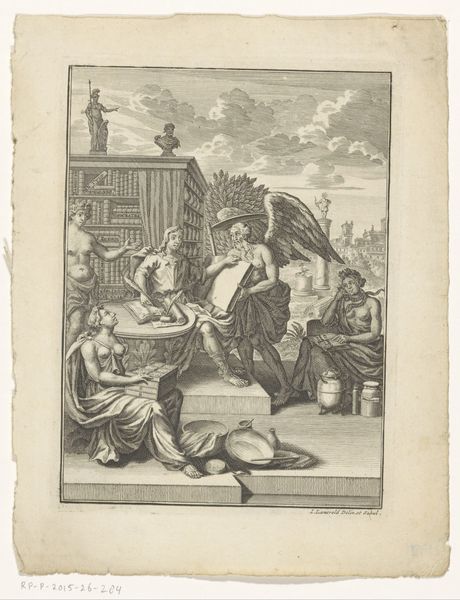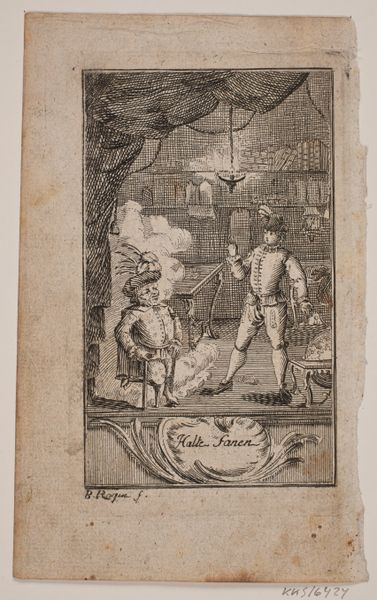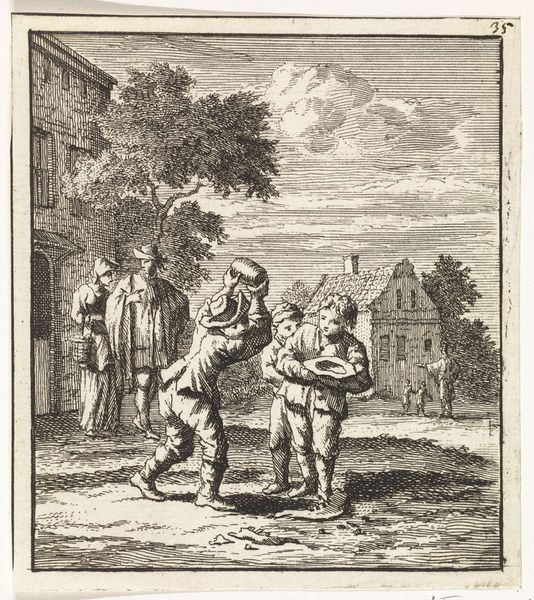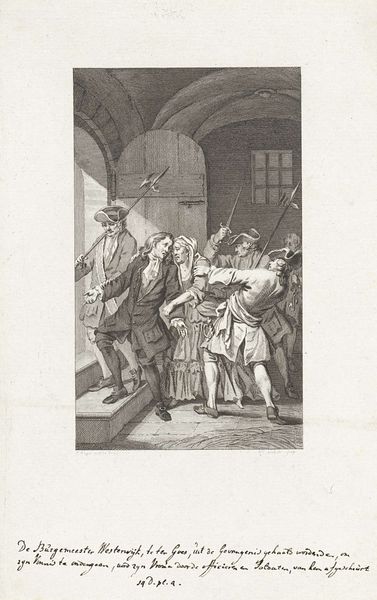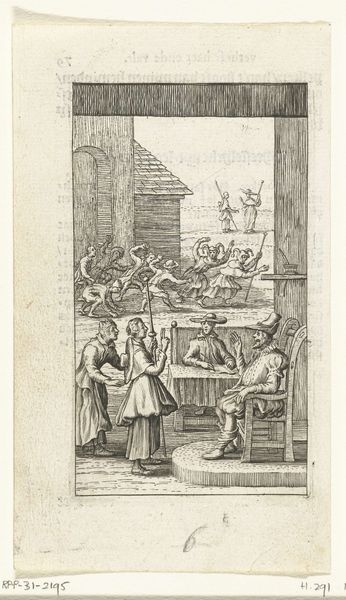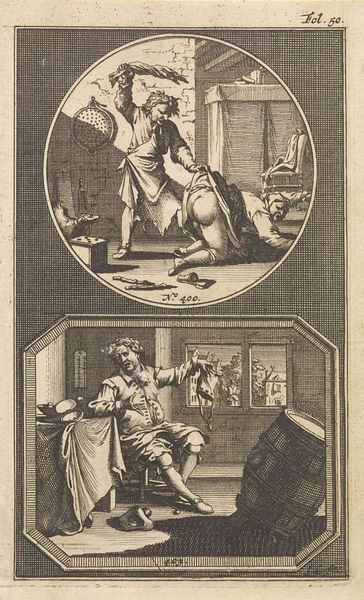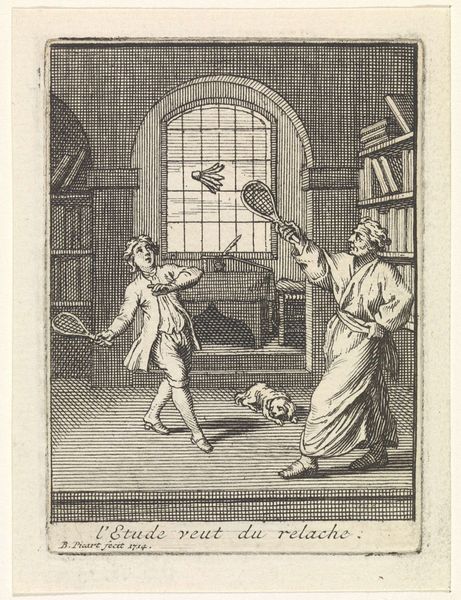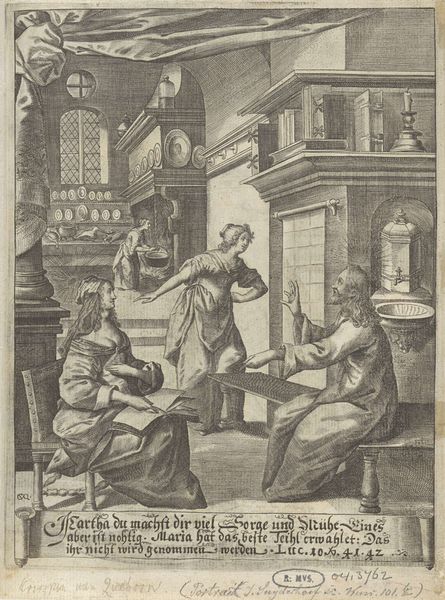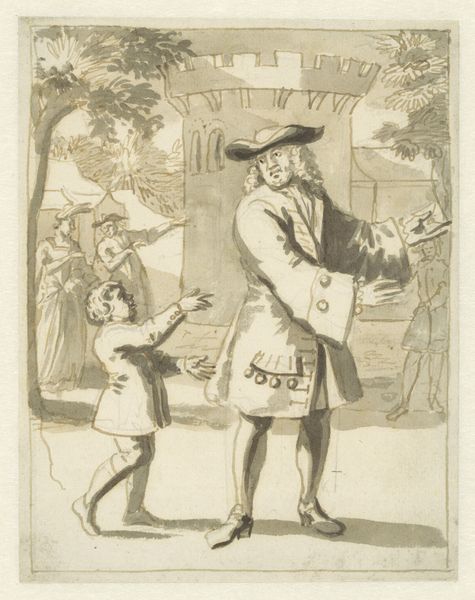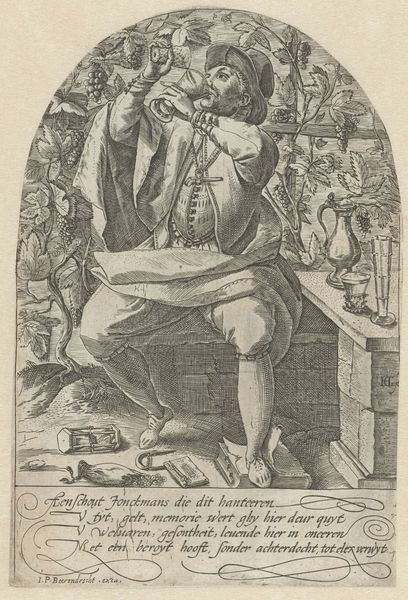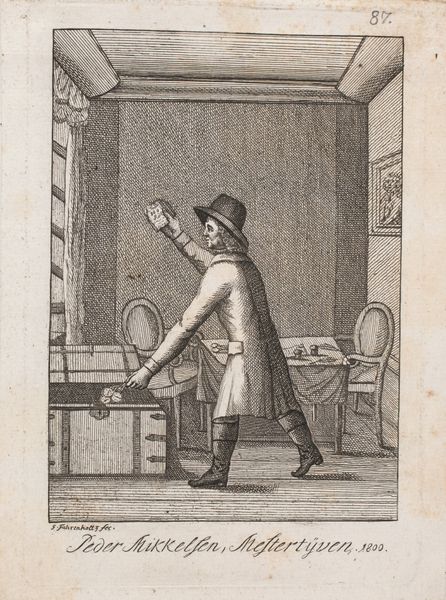
Dimensions: height 229 mm, width 165 mm
Copyright: Rijks Museum: Open Domain
Curator: George Andries Karsen created this etching on paper, titled “Cook with a Drinking Company,” in 1859. I find it instantly evocative of a Breughel painting—a jovial but slightly chaotic scene. What do you make of it? Editor: My eyes are immediately drawn to the interplay between labor and leisure. The cook, burdened by the platter, stands in stark contrast to the revelers behind him, suggesting a class dynamic. How were prints such as this consumed, do you imagine? Curator: These prints were, more often than not, relatively inexpensive, facilitating their widespread dissemination among the middle classes. Consider the details of production here: the labor of creating the etching plate, the press work... Karsen likely created multiple impressions of this image. It underscores art's connection to commerce and everyday life. Notice his knife, for instance. Editor: Precisely! And think about the semiotics of service—the cook, permanently etched in this servile pose with the weight of dinner literally bearing down upon him. That platter and its contents, whatever they may be, almost becomes a symbolic burden. Even the dog in the foreground seems to leap away from him, perhaps toward the scraps the other figures provide. Curator: Indeed. And the artist’s conscious choices surrounding mark making is significant; the variations in the hatching and line weight to convey depth and shadow would need considerable attention. He’s not merely replicating; he’s translating a complex visual experience onto a two-dimensional plane using rather limited materials. This is skilled artisanal work and demands consideration in terms of process and accessibility, even if thematically the social commentary might come off as slightly hackneyed. Editor: Perhaps. But look at how he presents the archway, it is not just a structural element, but it frames the scene, offering a peek at a landscape and some form of liberation from the dining party that awaits its food, maybe highlighting a yearning to escape this mundane indoor setting. That landscape and sky is an allegory of possibilities outside this dining room. Curator: An insightful point, certainly adding a layer of psychological depth beyond mere genre painting! Reflecting on our discussion, it strikes me how an analysis of production values and distribution allows for an interesting counterpoint to the symbolic elements inherent in Karsen's narrative. Editor: Agreed, these layers work well together. We’ve really uncovered an intriguing narrative tucked away in those lines and shapes.
Comments
No comments
Be the first to comment and join the conversation on the ultimate creative platform.
